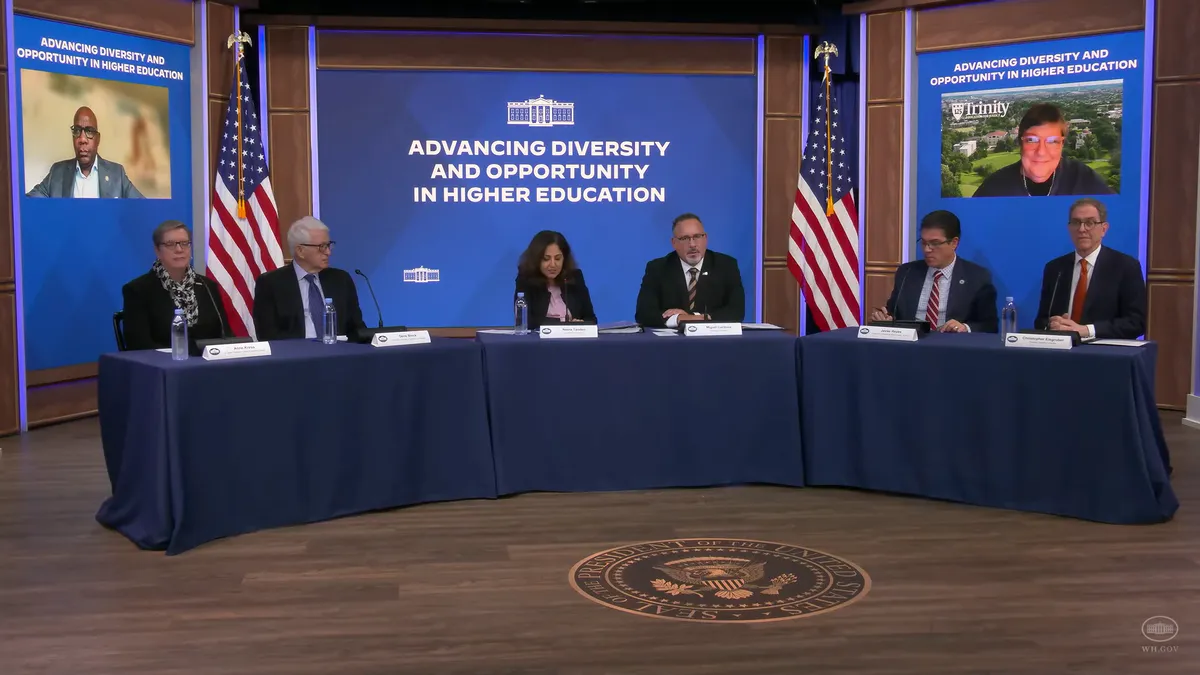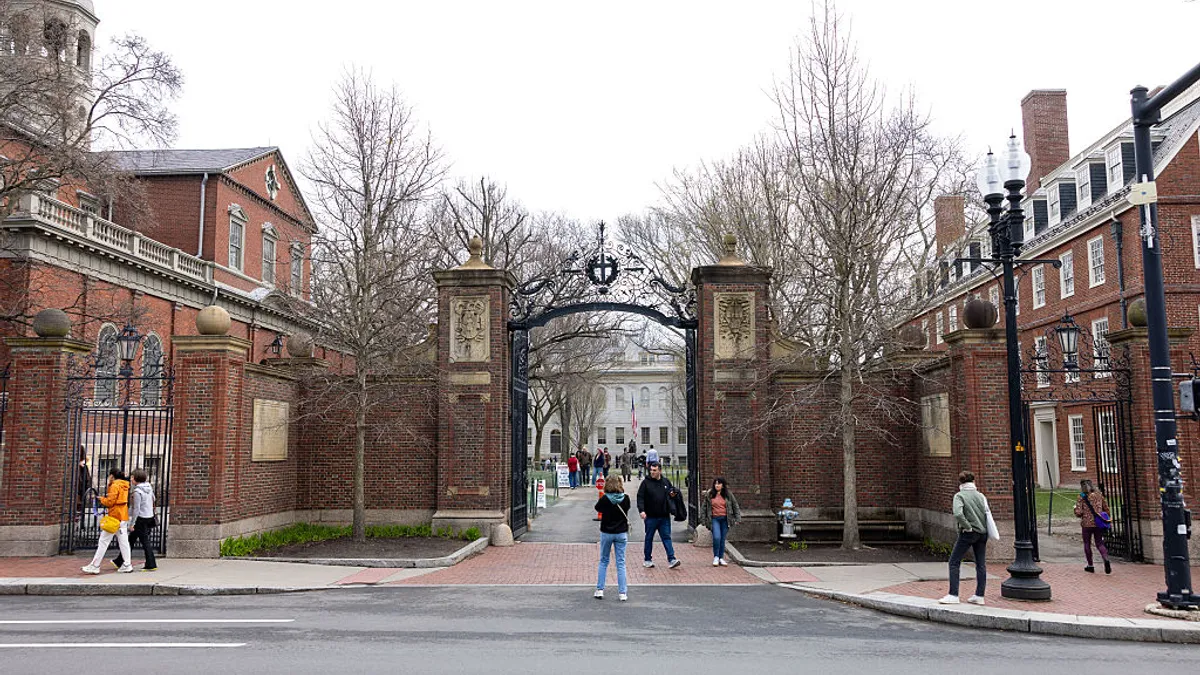The Biden administration on Thursday issued guidance on how colleges can continue to diversify in the wake of the U.S. Supreme Court’s seismic summer ruling invalidating race-conscious admissions.
Colleges continue to confront the fallout of the decision, which overturned decades of legal precedent enabling them to consider race as one factor in admissions.
Most institutions accept a majority or all of their applicants, and have no need to factor in race.
But the higher ed world has already observed the ruling’s ripple effects — including institutions eschewing racial considerations in other areas, like scholarships, which the high court did not address in June.
The U.S. Department of Education’s recommendations, released in a 66-page report, emphasizes the avenues colleges can legally explore to bolster socioeconomic and racial diversity in their classes.
Ideas range from strengthening programs that offer historically underrepresented students a path into higher education, to abandoning admissions policies shown to favor White and wealthy applicants. Critics in recent months have pounced on legacy preferences, which give advantages to students with a family connection to an institution, but disproportionately benefit the affluent in the process.
“This is a make or break moment for our country,” U.S. Education Secretary Miguel Cardona said during a Thursday event introducing the report.
What advice does the administration have?
The Education Department peppered the report with examples of colleges’ strategies to bring in and support a diverse student body.
Federal officials stressed colleges of all types can take up these ideas, even though the Supreme Court ruling targeted race-conscious practices at two top-ranked private and public institutions — Harvard University and the University of North Carolina at Chapel Hill, respectively.
For starters, colleges do not need to disregard race when conducting outreach in admissions, the department said. They are free to target high schools with high shares of low-income students and racial diversity.
Institutions can push, for instance, college access programs in these geographic areas, so long as they “do not give targeted groups of prospective students preference in the admissions process,” the administration’s report states.
Other programs that could improve access include summer and dual enrollment initiatives in which high school students take college-level courses. The Education Department cautioned, though, that sometimes these programs aren’t easily accessible for marginalized populations.
Further, the report states, colleges should contemplate dropping admission metrics like the SAT or ACT, which benefit wealthy applicants with resources for extensive tutoring.
Many colleges have drifted away from testing mandates amid the spread of COVID-19, which shut down many common exam sites. At least 2,000 colleges have adopted test-optional policies, including institutions that never historically asked for scores, according to a recent tally.
The agency also urged colleges, including prominent private institutions, to consider growing transfer programs, which can bring students from varying backgrounds onto campus.
Education Department officials cited an arrangement between Northern Virginia Community College and George Mason University, a well-known public college in the same area.
The institutions’ ADVANCE program helps advise students on their courseloads to ensure they’re not pursuing unnecessary credits for a two- or four-year degree. About 40% of participants come from low-income backgrounds, and most are students of color, the report states.
On the application side, colleges can increase emphasis on student “adversity and resilience” as admissions factors, according to the report.
That could mean learning more about whether students have experienced hardship or discrimination — including race-related prejudice.
At first blush, this might seem to infringe on the Supreme Court ruling, However, Chief Justice John Roberts, writing for the majority opinion, said that colleges can account for how students’ race affected their character — though he wrote they “may not simply establish through application essays or other means the regime we hold unlawful.”
The fight isn’t over
While colleges contend with an entirely new admissions landscape, the legal saga on race-conscious policies still isn’t over.
Students for Fair Admissions, the anti-affirmative action group that sued Harvard and UNC-Chapel Hill in the landmark case, this month filed a similar lawsuit against the U.S. Military Academy at West Point.
The Supreme Court’s ruling did not cover military academies, which Roberts wrote may have “potentially distinct interests” from other institutions. Nevertheless, SFFA is seeking the demise of race-conscious policies at these schools.
Conservative policymakers are also leveraging the decision to criticize other race-based programs.
The same day the White House published its report, the Republican-controlled House Subcommittee on Higher Education and Workforce Development held a hearing to dissect the high court ruling.
These types of hearings are often opportunities for lawmakers to air and promote their opinions on issues — and three out of the four hearing witnesses opposed race-conscious practices.
During the hearing, Republican Rep. Elise Stefanik, of New York, asked Alison Somin, a legal fellow at the right-aligned Pacific Legal Foundation, whether she was concerned colleges weren’t following the ruling.
Somin said yes.
She claimed that various statements from university officials could indicate noncompliance, as could “changes in policy that don’t seem to make sense in light of academic qualifications, but that instead seemed targeted at engineering a particular racial composition.”























